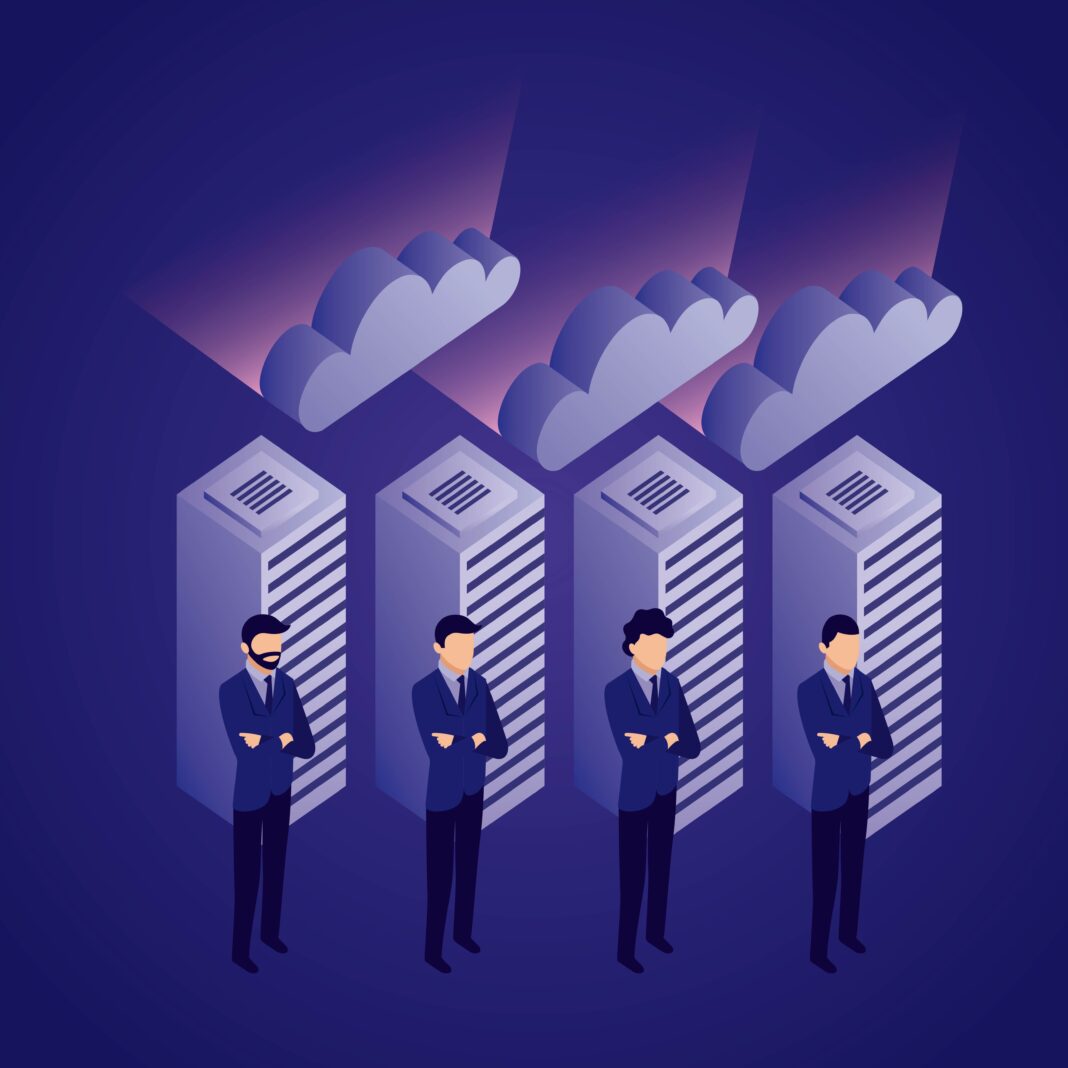Migrating an application to the cloud is one of the most impactful decisions a business can make. Whether you’re looking to reduce infrastructure costs, improve scalability, or enhance security, moving to the cloud offers significant advantages. However, without proper planning and execution, cloud migration can lead to unexpected costs, downtime, and security risks.

This guide provides a comprehensive, step-by-step approach to migrating your application to the cloud. We’ll cover everything from initial planning and choosing the right cloud provider to executing the migration and optimizing performance afterward. By the end, you’ll have a clear roadmap to ensure a smooth and successful transition.
Cloud Migration
What Is Cloud Migration?
Cloud migration refers to the process of moving an application’s data, workloads, and IT resources from an on-premises environment (or another cloud) to a cloud computing platform. This can involve:
- Lifting and shifting an existing application with minimal changes.
- Refactoring the application to take full advantage of cloud-native features.
- Replacing legacy systems with cloud-based alternatives.
Why Should You Migrate to the Cloud?
Businesses migrate to the cloud for several key reasons:
1. Cost Savings
- Eliminate upfront hardware costs – No need to purchase and maintain physical servers.
- Pay-as-you-go pricing – Only pay for the computing resources you actually use.
- Reduced operational expenses – Cloud providers handle maintenance, updates, and security patches.
2. Scalability and Flexibility
- Automatically scale up or down based on demand (e.g., handling traffic spikes during sales).
- Faster deployment of new features and updates.
- Global availability – Deploy your app in multiple regions for better performance.
3. Improved Security and Compliance
- Enterprise-grade security – Cloud providers offer built-in encryption, firewalls, and DDoS protection.
- Compliance certifications – Major providers comply with GDPR, HIPAA, SOC 2, and other regulations.
- Disaster recovery – Automated backups ensure data is never lost.
4. Performance and Reliability
- High uptime (99.9%+ SLA guarantees) – Cloud platforms have redundant systems to prevent downtime.
- Faster load times – Content delivery networks (CDNs) optimize speed for global users.
Common Cloud Migration Challenges
Despite the benefits, cloud migration comes with potential pitfalls:
- Unexpected costs (if resources aren’t optimized).
- Data security risks (misconfigured storage or access controls).
- Downtime during migration (if not planned properly).
- Legacy system compatibility issues (older apps may need refactoring).
2. Pre-Migration Planning
Step 1: Assess Your Current Infrastructure
Before migrating, conduct a full audit of your existing setup:
- Application architecture – Is it monolithic or microservices-based?
- Dependencies – What databases, APIs, and third-party services does it rely on?
- Performance bottlenecks – Are there slow queries, memory leaks, or outdated components?
Tools for Assessment
- AWS Migration Hub (for tracking migration progress).
- Azure Migrate (for dependency mapping).
- Google Cloud’s Migrate for Compute Engine (for workload analysis).
Step 2: Choose the Right Cloud Provider
The three major cloud providers are AWS, Microsoft Azure, and Google Cloud. Each has strengths:
| Provider | Best For | Key Services |
|---|---|---|
| AWS | Large-scale enterprises, startups | EC2, S3, Lambda, RDS |
| Azure | Windows-based apps, hybrid cloud | Virtual Machines, Azure SQL, Active Directory |
| Google Cloud | AI/ML, data analytics | BigQuery, Kubernetes Engine, Firebase |
Key Selection Criteria
- Pricing (compare reserved instances vs. spot pricing).
- Compliance requirements (HIPAA, GDPR, etc.).
- Service availability (does the provider have data centers in your target regions?).
Step 3: Estimate Costs and ROI
Use cloud cost calculators to predict expenses:
- AWS Pricing Calculator
- Azure Pricing Calculator
- Google Cloud Pricing Calculator
Hidden Costs to Watch For
- Data transfer fees (moving data out of the cloud can be expensive).
- Storage costs (archival vs. hot storage pricing differs).
- Licensing fees (some software requires cloud-specific licenses).
3. Cloud Migration Strategies
1. Rehosting (Lift-and-Shift)
- What it is: Moving the app as-is without modifications.
- Best for: Legacy apps with tight deadlines.
- Pros: Fast, low risk.
- Cons: Doesn’t take full advantage of cloud features.
2. Refactoring (Re-architecting)
- What it is: Rebuilding parts of the app to be cloud-native (e.g., microservices).
- Best for: Apps needing scalability improvements.
- Pros: Better performance, cost efficiency.
- Cons: Time-consuming, requires developer expertise.
3. Replatforming
- What it is: Minor optimizations (e.g., moving from a self-managed database to Amazon RDS).
- Best for: Apps that need some cloud benefits without a full rewrite.
4. Hybrid Cloud Approach
- What it is: Keeping some components on-premises while migrating others.
- Best for: Compliance-sensitive industries (finance, healthcare).
4. Executing the Migration
Step 1: Data Migration
- Use ETL tools (AWS DMS, Azure Data Factory).
- Validate data integrity (checksums, test queries).
Step 2: Application Deployment
- Containerize with Docker for portability.
- Orchestrate with Kubernetes for scalability.
Step 3: Testing and Validation
- Performance testing (load testing with JMeter).
- Security testing (penetration tests, vulnerability scans).
5. Post-Migration Optimization
- Set up auto-scaling to handle traffic spikes.
- Monitor costs (CloudHealth, AWS Cost Explorer).
- Enhance security (enable MFA, encrypt sensitive data).
FAQ
Q1: How long does cloud migration take?
A: Simple apps: 2-4 weeks. Complex enterprise apps: 3-6 months.
Q2: What’s the biggest risk in cloud migration?
A: Data loss – Mitigate with incremental backups and dry runs.
Q3: Can I migrate without downtime?
A: Yes, using blue-green deployment or hybrid migration.
Conclusion
Cloud migration is a strategic, multi-phase process that requires careful planning. Follow this guide to minimize risks and maximize benefits.

